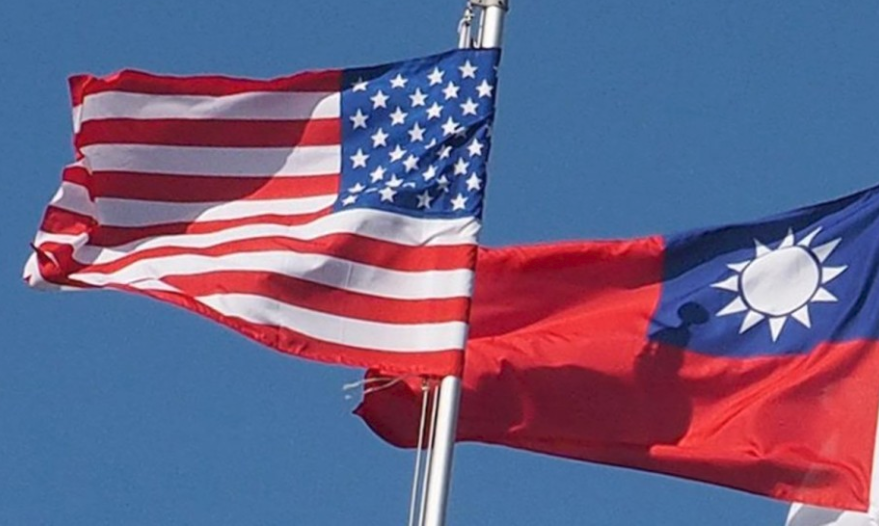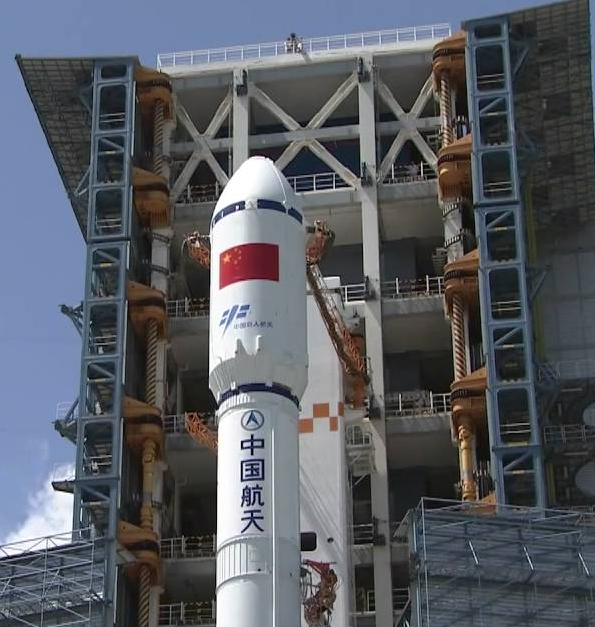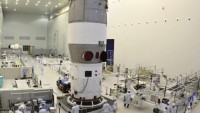China Plans Record 30 Space Launch Missions in 2017; US had 60 in 2016
| Arthur Dominic Villasanta | | Jan 04, 2017 09:56 AM EST |
(Photo : YouTube) Long March 7 at the Wenchang Satellite Launch Center.
China's space program under the control of and funded by the People's Liberation Army (PLA) plans to launch 30 space missions in 2017. If achieved, this year will be the busiest in the history of China's space program since its start in 1960.
Like Us on Facebook
China Aerospace Science and Technology Corporation (CASC) said among the highlights for this year will be the use of the Long March-5 and Long March-7 launch vehicles to carry out most of the missions.
State-owned CASC is the main contractor for the Chinese space program. It designs, develops and manufactures a range of spacecraft, launch vehicles, strategic and tactical missile systems and ground equipment for the military-led space program.
Despite the stepped-up pace of launches, China's record still pales compared to that of the United States. The U.S. conducted 60 successful launch missions in 2016 and should exceed that number this year.
China conducted 22 launch missions in 2016 and 19 in 2015.
Wang Yu, general director of the Long March-5 program, said this year is a critical year for China's new generation of launch vehicles. Long March-5 will launch Chang'e-5 lunar probe into space. The probe will land on the Moon, collect samples and return to Earth.
After Chang'e-5, China will launch the Chang'e-4 lunar probe in 2018 to achieve mankind's first soft landing on the far side of the Moon.
Long March-7, the more powerful version of Long March-2, will loft Tianzhou-1, China's first cargo spacecraft, into low Earth orbit in the first half of 2017, said Wang Zhaoyao, director of China Manned Space Engineering Office.
Tianzhou-1 will dock with Tiangong-2 space lab and conduct propellant experiments.
China successfully tested Long March-7 rocket in June 2015 and has shifted to new generation rockets that reduce the use of toxic rocket fuels.
Over the next five years, China will provide space services such as satellite communications to countries involved in the One Belt, One Road (OBOR) initiative, a development strategy and framework proposed by President Xi Jinping.
OBOR focuses on connectivity and cooperation among countries in Eurasia and China. It consists of consists of two main components: the land-based "Silk Road Economic Belt" (SREB) and oceangoing "Maritime Silk Road" (MSR).
TagsChina's space program, People's Liberation Army, 30 space missions in 2017, China Aerospace Science and Technology Corporation, Chang'e-5 lunar probe, Chang'e-4 lunar probe, Long March 7, Tianzhou-1
©2015 Chinatopix All rights reserved. Do not reproduce without permission
EDITOR'S PICKS
-

Did the Trump administration just announce plans for a trade war with ‘hostile’ China and Russia?
-

US Senate passes Taiwan travel bill slammed by China
-

As Yan Sihong’s family grieves, here are other Chinese students who went missing abroad. Some have never been found
-

Beijing blasts Western critics who ‘smear China’ with the term sharp power
-

China Envoy Seeks to Defuse Tensions With U.S. as a Trade War Brews
-

Singapore's Deputy PM Provides Bitcoin Vote of Confidence Amid China's Blanket Bans
-

China warns investors over risks in overseas virtual currency trading
-

Chinese government most trustworthy: survey
-

Kashima Antlers On Course For Back-To-Back Titles
MOST POPULAR
LATEST NEWS
Zhou Yongkang: China's Former Security Chief Sentenced to Life in Prison

China's former Chief of the Ministry of Public Security, Zhou Yongkang, has been given a life sentence after he was found guilty of abusing his office, bribery and deliberately ... Full Article
TRENDING STORY

China Pork Prices Expected to Stabilize As The Supplies Recover

Elephone P9000 Smartphone is now on Sale on Amazon India

There's a Big Chance Cliffhangers Won't Still Be Resolved When Grey's Anatomy Season 13 Returns

Supreme Court Ruled on Samsung vs Apple Dispute for Patent Infringement

Microsoft Surface Pro 5 Rumors and Release Date: What is the Latest?













